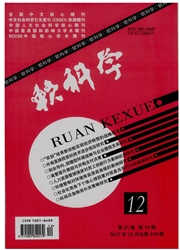

 中文摘要:
中文摘要:
通过参考方法对我国制造业细分行业的碳排放水平进行测算,发现制造业的碳排放在1991~2012年可以分为三个排放阶段。基于碳排放的测算数据,对EKC于制造业行业的适用性进行了实证分析,结果发现无论采用"人均收入"指标还是采用"人均产值"指标,"倒U型"的EKC均不存在。进一步通过Stirpat模型来进行分析,不仅拒绝了"倒U型"的EKC,而且拒绝了碳排放在制造业行业内部可以分解为人口、技术和财富这三个因素的结论。研究认为,制造业EKC不存在是可以通过既有解释进行说明的,制造业的碳减排需要主动进行,而不能等待经济阶段的发展来自动解决。
 英文摘要:
英文摘要:
This paper measured the level of the carbon emission of the manufacturing sector in China,by the reference method of the energy’s detailed classification. It is founded that the carbon emission of the manufacturing sector can be divided in three phases from 1991 to 2012. Based on the data of carbon emission measurement,an analysis about the Environment Kuznets Curve( EKC) in the manufacturing sector of our country is given to talk about its application problem. Result shows that an "inverted-U"EKC does not exist with either the use of "average-income"or of "average-output value",and then the Stirpat model is used to analyze the problem,Yet,not only is the"inverted-U"EKC refused,but also the stirpat model. It is believed that the finding that the EKC does not exist in the manufacturing sector can be explained by some previous explanations,the carbon emission reduction in manufacturing sector should be on the way positively rather than waiting for the change of the economic phase.
 同期刊论文项目
同期刊论文项目
 同项目期刊论文
同项目期刊论文
 期刊信息
期刊信息
